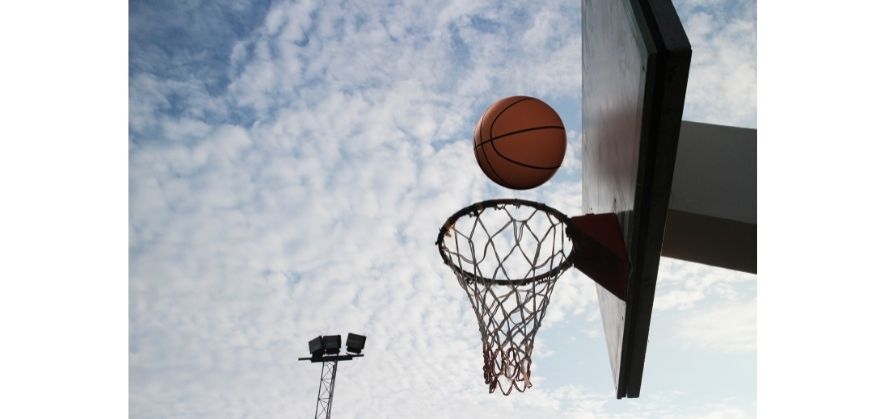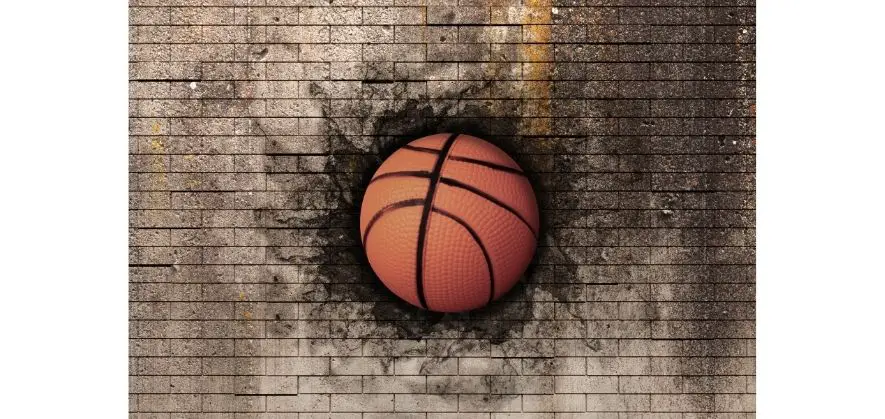Is your basketball not inflating after you have followed the steps to properly fill and seal the basketball for storage or play?
You may be due an adjustment of valves, but there are other causes as well that can lead to loss of air from inside the ball.
Basketballs may continue to deflate if they have a leak in the inner lining or outer shell that lets air escape from the object. In other cases, a basketball may continue to deflate if it’s left out in the cold weather or used in an improper manner that damages it.
Read on to gain a better understanding of this topic.
Why does your basketball keep on deflating?
Below is a list of some common problems with basketballs leading to them losing their air.
If any one of these applies to you please see below how to correct this issue.
1. The ball has a valve leak
A basketball may have a valve leak caused by something that’s prohibiting it from staying fully sealed, which in turn allows air to escape.
If your basketball is leaking air through its valve then first check to make sure all the screws holding the valve cover onto the backboard (the part where the valve stem goes) are tight.
Also check the valve itself for wear and tear – if it feels hard it’s probably worn out and needs replacing.
To test the valve, open up the valve cover by removing the screw caps at either side of the valve.
Then gently press down on the center of the valve stem until it clicks into place.
This will let you know if anything is clogged around the valve stem.
If everything looks fine then take off both caps over the valve and look inside.
Any debris should fall right out.
Now using dental floss thread two pieces of cotton string tightly under each end of the valve stem going towards the front and back of the ball respectively.
Pulling upwards firmly will allow you to get a feel for whether there is something blocking the valve. It shouldn’t move much.
If so, remove whatever is causing the obstruction.
Once done repeat the same process with another piece of floss threaded under the opposite ends of the valve stem going toward the top and bottom of the ball.
Again, pulling firmly upward should show no movement.
If so, continue checking every inch along the length of the valve stem. Make sure nothing else is blocking the valve stem.
Now replace the cap over the valve and tighten it down securely once more.
Test the valve again to ensure there is still no leakage. If there is then try tightening the valve stem further making sure it doesn’t come loose when playing.
If none of this works then it could very well be time to send your basketball away for service.
2. The outer shell of the ball has a tiny hole in it

The most likely reason for this happening is because someone was careless during production and they accidentally drilled a small pinhole somewhere on the surface of the ball.
These holes usually happen while drilling the core for the valve stems.
They don’t really cause any harm since they’re pretty shallow and only big enough to let a little bit of air escape from the inner layer of the ball.
But if you notice it happening every now and then then I would recommend having the balls serviced immediately.
Conversely, a puncture to the ball’s outer surface can cause it to keep on deflating.
This may happen when the ball comes into contact with a sharp object that ruptures its part of its outer shell lining.
3. The ball has been left outside in cold weather

When storing your basketballs outdoors in extreme temperatures like those found near ski resorts, etc., you need to consider what kind of material the ball is made out of.
Most basketballs today are composed mainly of rubber which shrink slightly in cold weather.
So, if the ball isn’t inflated correctly or allowed to fully lose its inflation pressure before being stored, it will eventually go flat.
When exposed to high heat and humidity, many types of rubber tend to expand and soften.
And if the temperature drops suddenly, the softened rubber tends to contract, “pulling” the air out of the ball.
To prevent this from happening, it’s best to keep the basketball indoors and warm whenever possible.
4. The ball has been used carelessly/improperly

Another reason for deflation is improper use.
Basketball players who are overly aggressive often slam the ball against the ground rather than pass it or shoot it without taking proper aim.
Repeated impacts also crack the outer shell of the ball and loosen the threads holding the valve together.
As a result, more air gets lost.
For example, if you repeatedly hit the ball directly on the rim, the valve won’t inflate as full as it normally does.
Or even worse, if you attempt to bounce the ball several times after hitting it directly on the rim, air will rush out the sides because the valve becomes unsealed.
In addition, if you bounce the ball too forcefully, the valve stem may become damaged.
A cracked valve and loosened valve-thread connection makes the ball less responsive and harder to control.
Is it normal for a basketball to deflate?
Yes!
It’s perfectly usual for a basketball to lose air pressure over time.
A combination of factors such as valve leaks and wear and tear can cause a basketball to shrink in size as it loses its ability to hold and seal the air within it.
Basketballs typically deflate when they’re left unused for a while or through normal playing use over the course of a couple of months.
In fact, we have a similar article that covers why basketballs lose air which might be worth checking out.
Conclusion
If you’ve read this article through to the end, you’ll have learnt about the main contributors as to why your basketball keeps deflating.
Hopefully this post has served its purpose by giving you the knowledge needed to fix this issue, so that you can enjoy your time back on the court again.
- The Most Popular Prop Bets Made During the NCAA Final Four Tournament - February 9, 2024
- Evaluating the Enigma: Does LeBron James Possess a No-Trade Clause? - May 16, 2023
- Gravity’s Dance: Unveiling the Art of Bouncing Basketballs - May 16, 2023

